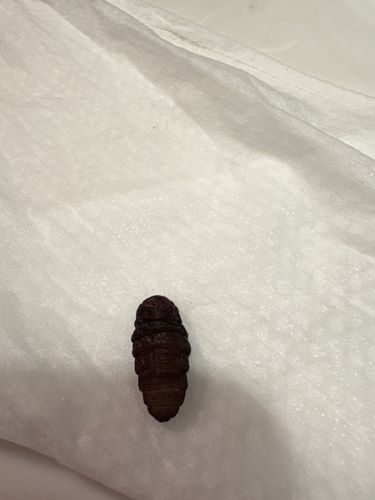Moth Pupa
Scientific Name: Not determinable to species level from pupa stage alone
Order & Family: Lepidoptera (Moths and Butterflies), potentially various families
Size: Typically 1-5 cm (0.4-2 inches), depending on the species.

Natural Habitat
Varies widely depending on the specific moth species. Pupae are often found underground, in leaf litter, attached to plants, or in constructed cocoons.
Diet & Feeding
The pupa stage does not feed. The larval (caterpillar) stage typically feeds on plant material (leaves, stems, roots, fruits), while adult moths may feed on nectar or not at all.
Behavior Patterns
The pupa is a non-feeding, inactive, transitional stage in the life cycle of moths (complete metamorphosis). During this stage, the caterpillar transforms into an adult moth. The pupa in the image appears to be an obtect pupa, a common type where appendages are fused to the body. It likely developed from a caterpillar and will eventually emerge as an adult moth.
Risks & Benefits
Generally benign. A pupa itself poses no direct risk. Depending on the species, the larval stage (caterpillar) can sometimes be a pest to agricultural crops or gardens. Adult moths can be pollinators of various plants. Overall, moths are an important part of the food chain, serving as food for birds, bats, and other animals.
Identified on: 10/17/2025